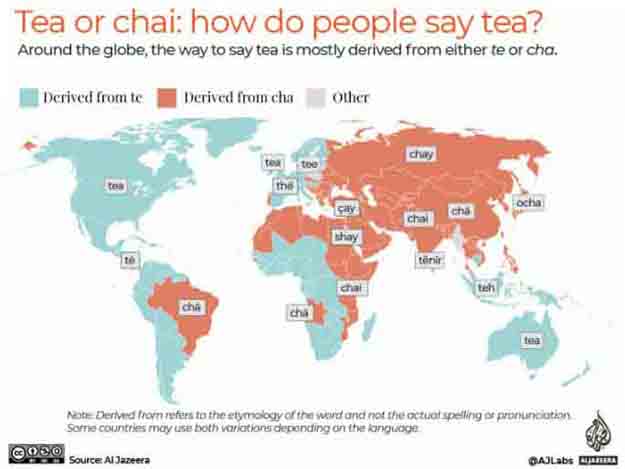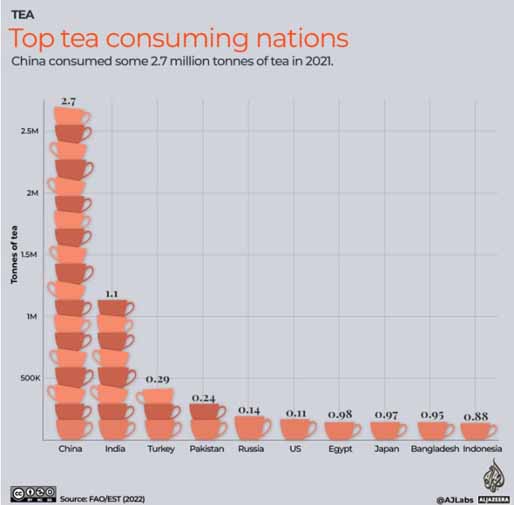 International Tea Day was celebrated on the 21 st of May to highlight the cultural traditions, health
International Tea Day was celebrated on the 21 st of May to highlight the cultural traditions, health
benefits and economic importance of tea. Of course, tea has other benefits in bringing people
together, allowing one’s mind to wander and refreshes and revitalises many a dull thought. The
following facts have been put together underline tea’s remarkable impact on the world:
It is believed that tea is consumed by  3 billion people every day making it more popular than
3 billion people every day making it more popular than
coffee or alcohol.
The origins of tea are unknown but it may have first come about in northeast India, northern
Myanmar and southwest China according to the UN.
Tea wasn’t always a hot beverage. Historical records show tea leaves were recognised for
their therapeutic effects and were chewed and added to soups and porridges.
Around the world, nearly all words for tea are derived from the root words “Cha” or “te”.
For example, it is chá in Mandarin, chai in Hindi, Russian and Persian and shay in Arabic. In
contrast, in English it is Tea, tee in German and té in Spanish.
Both versions of the word seem to have come from China and how they spread was a result
of the trade routes used. The words that use ‘cha’ for tea spread by land through Central
Asia whereas the words that use ‘te’ spread by sea. This is why Europeans are more likely to
use ‘te’ as the basis for the word tea but Asian nations are more likely to use ‘cha’.
China is the world’s biggest tea producer making 47% of the world’s tea followed by India
with 20%.
